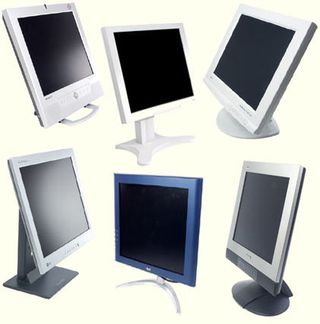17" LCD Part II: The Heavyweights Enter The Ring
Introduction

Try an LCD monitor and you're bound to adopt it - there's no going back to the CRT (Cathode Ray Tube) monitors. On the latest liquid crystal monitors, the characters are finer and more precise, images are not deformed and the monitor itself is easier to configure and use. There are no more hassles adjusting the geometry, moiré, etc. The image here is clear and properly framed in five seconds, just the time it takes if you need to run the self-adjustment function. They are better-looking, take up less space (even to the point where you can hang them on the wall), and - the definitive argument - more environmentally-friendly. They consume three times less energy.
Unjustified Criticisms
When you use LCD monitors, you begin to put the main criticisms of the technology into perspective. The first point of criticism is the weakness of liquid crystal response time. In fact, you might find it annoying to start with, but you'll soon forget about it, even if you are an ace gamer for Quake only. Response times for most of the monitors now on the market are good enough. The image lag is still a bit visible and we can't wait to test monitors with shorter response times, but the progress over the past year is more than satisfactory.
Fault number two is that the LCD contrast ratio is lower than on a CRT. This is true, but it doesn't really affect the quality of the images on screen. Brightness levels are higher than a year ago, and you'll often find that the stills in games are better on an LCD than on a CRT.
Stay on the Cutting Edge
Join the experts who read Tom's Hardware for the inside track on enthusiast PC tech news — and have for over 25 years. We'll send breaking news and in-depth reviews of CPUs, GPUs, AI, maker hardware and more straight to your inbox.
Most Popular

